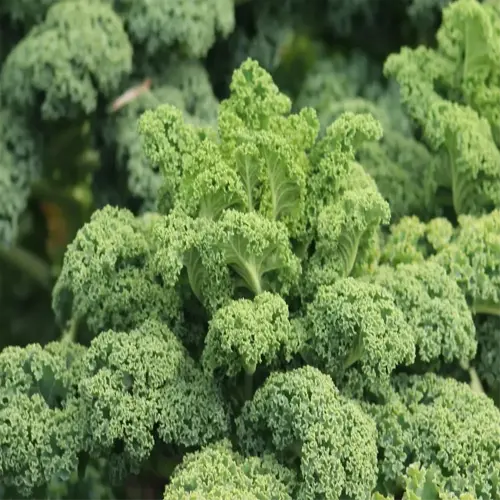How to Grow Lavender: Complete Expert Guide for Success

Written by
Olivia Mitchell
Reviewed by
Prof. Samuel Fitzgerald, Ph.D.Growing lavender: Full sun and well-drained soil are required
Sandy, alkaline soil promotes drainage and fragrance
Prune 1/3 of vegetative growth every year to reduce woodiness
Cold-hardy English lavender can grow well under zone 5 with additional mulch
Water lavender thoroughly but infrequently, it likes to experience drought stress
Propagate lavender either by cuttings or layering to maintain genetic fidelity
Article Navigation
Understanding a lavender's love of sun and simplicity is your gateway into learning how to grow lavender. Picture a plant that provides the scent of a garden, falls frank to bees, and can withstand the test of drought once established. The first lavender I grew survived four days of neglect while I was on vacation in the summer - I committed when I did not in my primary duties as a gardener when it had gritty soil and six hours of sun every day.
Three rules for successfully growing lavender and preventing plant failure are: sunlight, drainage, and pruning. I have seen clay soil cause roots to rot, but in a raised bed consisting of sand and gravel allow roots to spread freely. Annually pruning maintains plants form, which I learned after losing a woody specimen to winter frost.
Not all lavenders are suited for all locations. English types can handle snow beneath mulch, while Spanish types bake happily in the southern heat. Selecting the appropriate type is more important than all the fussy care - a lesson I learned after trying to replace three plants that died even with the greatest care with varieties appropriate to the zone.
Choosing the Right Lavender Variety
Despite being hardy to zone 5 and benefiting from snow cover, English lavender resists cold weather, while Spanish varieties prefer warmer zones 7 and above. I have observed Minnesota gardeners who had success with ‘Munstead' protected with burlap wraps, while Arizona growers assert that ‘Goodwin Creek Grey' is heat tolerant.
Adjust the amounts of lavender based on your space. The sizable Lavandins hybrids can fill out borders at a hefty 3 feet wide, while other varieties fit more sensibly, such as the ‘Hidcote' that will work in patio pots. I had a client, long ago, who put down French lavender right by her tomatoes, and the roots in the mint family strangled both plants. Plan for larger varieties to give them plenty of room.
Smell the leaves before payment is rendered. Culinary types such as 'Royal Velvet' have a strong perfume, while ornamental types like 'Anouk' have showy flowers. My neighbor experienced a soap-making disaster because she used low-oil Spanish lavender. If you are using lavender in your kitchen or sachets, the smell should trump the size of the flower.
Turning tender species into movables is a question of potting. Dwarf ‘Hidcote' will overwinter indoors by southern-facing windows. I put it into 12-inch Clay pots with gravel in the bottom. Plastic holds moisture. My lavender that is planted in pots on my balcony will outlast all of my garden varieties thanks to the volume of the controlled soil and the ease of frost protection.

English Lavender
- Origin: Mediterranean highlands; thrives in dry, rocky soils
- Ideal for: Culinary recipes (short flower spikes = higher oil content)
- Bloom time: Late spring to early summer (4-6 weeks)
- Height: 12-24 inches (30-61 cm); compact form suits containers
- Uses: Essential oils, sachets, baking (mild sweet flavor)
- Pruning tip: Cut back 1/3 after flowering to prevent woody stems
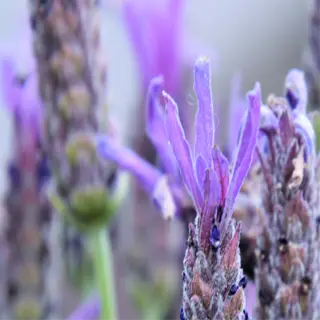
French Lavender
- Heat tolerance: Survives 100°F (38°C) with afternoon shade
- Leaves: Serrated edges; releases camphor scent when crushed
- Bloom period: Spring to fall (longest flowering season)
- Height: 24-36 inches (61-91 cm); needs spacious planting
- Uses: Ornamental hedges, dried floral arrangements
- Warning: Not frost-tolerant; dies below 20°F (-6°C)
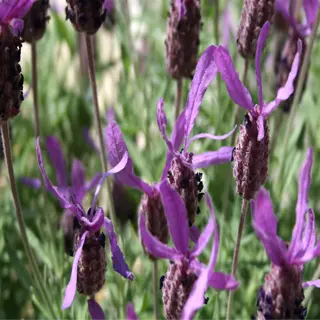
Spanish Lavender
- Distinct feature: Showy bracts resembling butterfly wings
- Drought resistance: Survives 3+ weeks without water
- Bloom time: Early spring (reblooms with deadheading)
- Height: 18-24 inches (46-61 cm); mounded shape
- Uses: Rock gardens, xeriscaping, patio containers
- Soil needs: Gritty mix (50% sand) for root health

Lavandin Hybrids
- Vigor: Grows 3x faster than English lavender
- Cold tolerance: Hardy to -10°F (-23°C) with mulch
- Bloom length: 8-10 weeks (longest-lasting cut flowers)
- Height: 24-36 inches (61-91 cm); upright spikes
- Uses: Perfumes, soaps, large-scale landscaping
- Note: Sterile hybrids; propagate via cuttings only
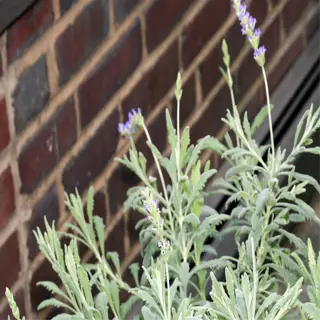
Goodwin Creek Grey
- Foliage: Silvery-gray leaves with finely toothed edges
- Humidity tolerance: Thrives in coastal and humid climates
- Bloom frequency: Flowers spring to early fall
- Height: 18-30 inches (46-76 cm); bushy growth
- Uses: Borders, pollinator gardens, aromatic hedges
- Unique trait: Resistant to powdery mildew
Soil Preparation & Fertilizing Basics
Lavender prefers alkaline soil (pH 6.5-8.0), in contrast to acid-loving plants like blueberries. I once helped a client amend her garden with lime in her lavender beds while using pine needles nearby on her hydrangeas. This separation avoids competition from roots and respects the differing needs of each plant. I recommend testing the soil yearly with a $7 soil kit.
Integrating *coarse sand or gravel* into the soil in planting holes with 50% soil prevents roots from brooding in soggy moisture. I once replaced my neighbor's clay and thyme with a gritty mixture and it flourished. Remember, plants are accustomed to growing in the environmental conditions of a 'dry mountain slope' rather than just a 'rich farmland' soil. *Drainage is key to success - rather than a "fertile" soil - for these plant materials which are Mediterranean natives.*
Avoid fertilizers with high nitrogen content as they promote leafy plant growth while reducing stem strength and blooms. The worst lavender mistake I made was fertilizing young plants in the spring with fish emulsion--by July plants were flopped over and lived a short life. Worm castings provide a gentle way to feed plants without smothering plant roots. Less is more when it comes to fertilizing lavenders.
Compost is effective if you use it sparingly, as little as 10% in a sand mix. For container plants, I will use 1 part aged compost to 3 parts gravel. You will get rot, as I learned bringing back a student's submerged ‘Hidcote,' if you load the organics on too thick. Lavender wants to be amply neglected, not to eat everything at a buffet.
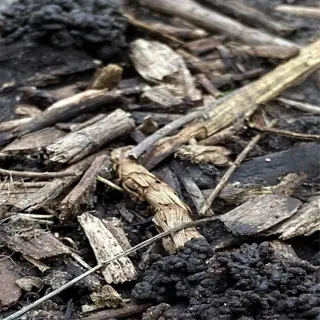
Worm Castings
- NPK Ratio: 1-0-0 (gentle, low-nitrogen)
- Application: Mix 1 part castings to 3 parts soil
- Benefits: Enhances microbial activity; no burn risk
- Frequency: Apply once per growing season
- Cost: $15-$20 per 10 lbs (4.5 kg)
- Warning: Avoid in soggy soils (retains moisture)
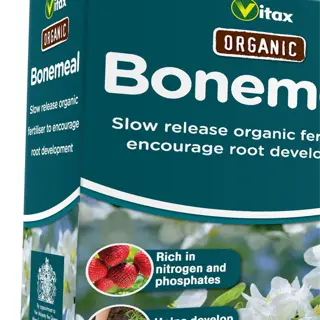
Bone Meal
- NPK Ratio: 3-15-0 (high phosphorus)
- Application: 1 tbsp per plant at planting
- Benefits: Strengthens root development
- Frequency: Reapply every 6-8 weeks
- Cost: $10-$15 per 5 lbs (2.3 kg)
- Warning: Attracts scavengers (bury deeply)

Kelp Meal
- NPK Ratio: 1-0-2 (potassium-rich)
- Application: 1/4 cup per sq ft (30 cm²)
- Benefits: Boosts drought resistance
- Frequency: Apply in spring and midsummer
- Cost: $25-$30 per 5 lbs (2.3 kg)
- Warning: High salt content (leach soil annually)

Fish Emulsion
- NPK Ratio: 5-1-1 (balanced nitrogen)
- Application: Dilute 1 tbsp per gallon (3.8 L)
- Benefits: Fast-acting liquid feed
- Frequency: Every 2-4 weeks during growth
- Cost: $12-$18 per 32 oz (946 mL)
- Warning: Strong odor (apply outdoors)
Sunlight & Watering Essentials
Six hours of sunlight directly is essential for lavender. Less light means fewer blooms, something I discovered when a shaded ‘Munstead' only produced five stems. Morning sunlight also helps dry dew off dew-laden leaves (a trick I picked up from a Tuscan gardener).
Over-watering brings about the yellow leaves to scream. You can check if the soil is wet by putting your finger 2 inches down in the soil. If the soil is damp, do not water. I lost my first lavender to root rot until transitioned to a terracotta pot. I don't water until the stems droop a little like the drought cycles from its homeland in the Mediterranean.
Be alert for summer. If you don't have rain, water every 10-14 days. Winter? Just let the snow water your plants. I lost a mature bush when I watered in the fall - the roots were dormant, and they drowned. Use gravel mulch, not bark, to reflect moisture away from woody stems.
People who garden on the coast have it easier. The humidity substitutes for some of your watering, but moving air is essential. My client in Oregon has lavender production under the eaves of his home, and he has a fan stream air across it. Apply your watering based on the needs of your region and not when the calendar says to do so. If you pay attention to their posture and leaf colors, plants tell you when they need something.

Long-Spout Watering Can
- Precision: Targets soil without wetting foliage (prevents mildew)
- Capacity: 2 quarts (1.9 liters) ideal for container plants
- Material: Galvanized steel resists hard water stains
- Best for: Seedlings and indoor lavender
- Cost: $25-$40
- Tip: Choose models with detachable rose head
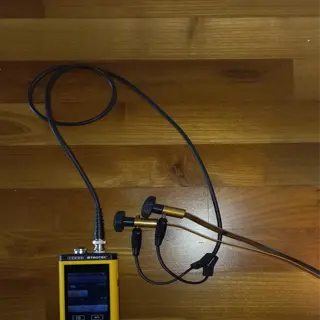
Moisture Meter
- Function: Measures soil dampness 1-10 scale (1 = desert-dry)
- Calibration: Test in water first; adjust for sandy soils
- Depth: 6-8 inch (15-20 cm) probe reaches root zone
- Best for: Beginners unsure of watering cues
- Cost: $12-$20
- Warning: Avoid leaving probes in soil (corrodes metal)
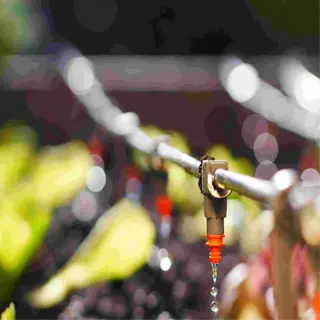
Drip Irrigation Kit
- Flow Rate: 0.5 gallons (1.9 liters) per hour emitters
- Setup: 12-18 inch (30-46 cm) spacing between drippers
- Timers: Battery-operated models for vacation care
- Best for: Large outdoor lavender patches
- Cost: $50-$120
- Tip: Add filter to prevent clogging from hard water
Step-by-Step Planting Guide
Treat rootballs like a delicate family heirloom. If they are compacted, gently tease apart tangled roots that might be knotted, as I found out a few years ago after losing a lavender plant to suffocation. Then, take the sandy soil that you prepared, and use it to backfill the planting hole, knowing this soil has a pH of 6.5-8.0 to ensure that the roots breathe, and can drain freely.
Schedule plantings by the frost dates in your region. If you live in the North, be sure to wait until late spring or risk frost damage or stunted growth. A Southern gardener can plant in early fall and is less likely to risk damage. I rushed a zone 5 planting in April, and a surprise frost meant a lot of row cover repair work at a cost.
Dig holes that are two times wider than the root balls to plant in the ground but match the container depth to keep the stems from being buried. For example, my client's potted lavender drowned because she used a deep planter, but now that I have her using a shallow pot with gravel at the bottom of the pot, she is not having issues with soggy soil.
Care after planting seals the deal for success. To begin, water thoroughly once, then allow the soil to completely dry out. I cover my new plants with crushed oyster shells to increase alkalinity, a tip I learned from coastal growers. Don't fertilize: lavender is historically from the Mediterranean, and its genetics want poor soils, not a rich buffet.
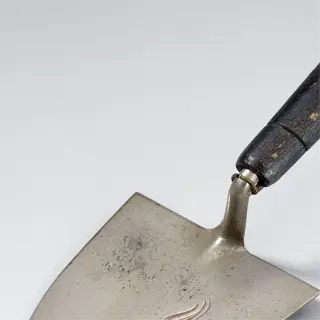
Stainless Steel Trowel
- Blade Length: 8 inches (20 cm) for rootball-sized holes
- Handle: Ergonomic grip reduces wrist strain
- Material: Rust-proof for wet soils
- Best for: Container planting and tight spaces
- Cost: $18-$30
- Tip: Sharpen edge annually for clean cuts
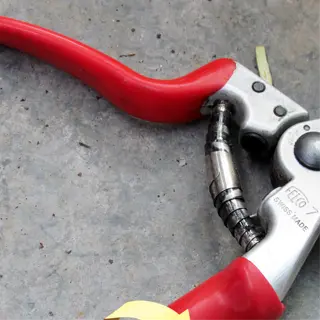
Bypass Pruning Shears
- Cut Capacity: 3/4 inch (1.9 cm) stems
- Use: Trim damaged roots before planting
- Blade Type: Non-stick coating for sap resistance
- Best for: Mature lavender with woody roots
- Cost: $25-$45
- Warning: Disinfect after use to prevent disease
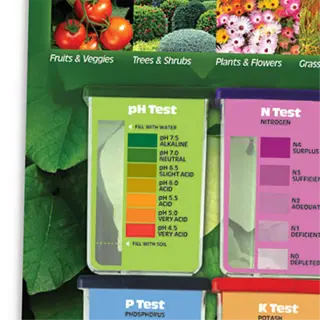
Soil pH Test Kit
- Range: 4.0-9.0 pH (ideal for lavender)
- Accuracy: ±0.2 pH points
- Speed: Results in 1-2 minutes
- Best for: Testing garden beds pre-planting
- Cost: $10-$15
- Tip: Test multiple spots for consistency
Pruning, Harvesting & Long-Term Care
Trimming or pruning after flowering has finished in late summer is advisable for creating more bushy plants as opposed to trimming in the spring. I remember one time I pruned my lavender too early and lost all the flowers for that year. When trimming for shape you can remove one-third of the green growth but don't ever cut into a woody stem. Those stems are unlikely to regrow.
When harvesting stems, collect them at 6-8 inches in length, when the buds have color but are not yet open. Bundle 20 stems together using rubber bands, allowing them to shrink as they dry. There was once a time when around 50 bundles was hanging from my kitchen wall, and the scent was almost unbearable at the time. One bundle smelled stronger than garlic, showing that the concentration was stronger before blooming.
Governing care for winter is the zone. In zone 5, plants should be mulched with gravel, an inorganic method, that will block moisture. In zone 8, I prune lightly in the fall, but I don't do any heavy pruning. I have had a client's lavender survive temperatures of -15°F when protected with straw, but the lavender rotted when protected with leaf piles.
Deadheading is when you remove the spent blooms to encourage reblooming. Pruning is when you cut back the plant, which encourages bushiness. Use snips for clean cuts, as ragged cuts will cause a plant to become infected. My neighbor used hedge shears on his lavender, while I have used hand pruners, and it has thrived for 10 years. It is just as important to use sharp tools as it is to time your maintenance properly.

Bypass Pruning Shears
- Blade Type: Curved for clean cuts on woody stems
- Cut Capacity: 3/4 inch (1.9 cm) diameter
- Grip: Non-slip handle for wet conditions
- Best for: Precision pruning without crushing stems
- Cost: $25-$50
- Warning: Oil blades monthly to prevent rust
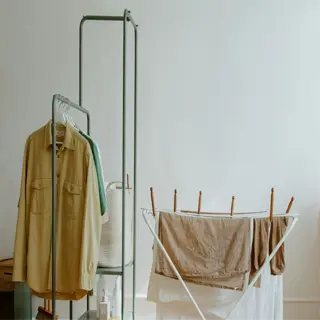
Drying Rack
- Material: Stainless steel mesh (anti-mold)
- Size: 24x36 inches (61x91 cm) for large harvests
- Ventilation: Elevated design promotes airflow
- Best for: Bundles of 50-100 stems
- Cost: $40-$75
- Tip: Keep in dark room to preserve color
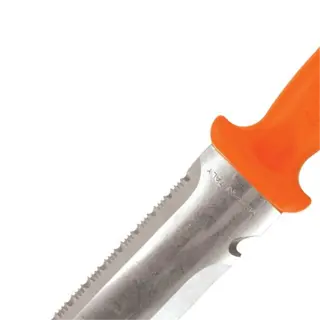
Soil Knife
- Blade: Serrated edge cuts roots/mulch
- Length: 14-inch (35 cm) stainless steel
- Use: Divide mature lavender clumps
- Best for: Zone 5+ (3-year-old plants)
- Cost: $35-$60
- Warning: Wear gloves (sharp edges)
5 Common Myths
Lavender requires regular watering.
Lavender tolerates drought, and in fact prefers dry conditions. Too much water creates root rot (especially in poorly-drained soils). Water only when the soil is dry 2 inches down (usually every two to three weeks for established plants).
Spring pruning is favorable for increased bloom.
When you prune lavender in spring, you can cut new growth, which decreases flowering. The best time to prune lavender is in late summer/early fall, after bloom. Additionally, you can prune 1/3 of the green growth to maintain form and limit woody stems on the plant.
All lavender types are happy inside.
Only compact cultivars 'Hidcote' or 'Munstead' are able to adapt to indoor conditions. Most lavenders need 6-8 hours of direct sunlight daily and this can be difficult to acquire without grow lights in most homes.
Lavender grows best in richly nutrient soil.
Lavender grows well in poor, rocky soils with low organic matter. Rich soils result in leggy, fewer blooms. Amend soil with sand, gravel (no compost) to approach the Mediterranean conditions.
Lavender cannot survive freezing conditions.
Cold hardy varieties like English lavender (Lavandula angustifolia) can survive winter down to -20°F (-29C) with enough mulch for protection. Tender varieties (i.e. French lavender) need winter protection if they are grown in zone 7 or above.
Conclusion
Sunlight, drainage, and pruning are the holy trifecta of what lavender needs to survive. Miss one of those three and the plant will revolt. I learned this lesson when I lost a cherished ‘Grosso' because it was in a wet spot. Sunny, hot locations with well-drained gravel-based planting beds and annual haircuts create compact and flowering plants for 10 years or more!
New growers should begin with cold-hardy ‘Hidcote' or ‘Munstead' since they tolerate first-time errors. My initial lavender was in zone 5, and the only things I knew to do were not to fertilize it and not to care for it too much. Hardy types tend to be more forgiving of watering mistakes than fine French types.
The overall concept of longevity is linked to the seasonal cycles. Apply mulch in the winter, prune it in late summer, and then allow the spring rains to handle hydration. A client's 15-year-old lavender hedge survived solely with Juli shearing and gravel top-ups in February, consistency beats intensity.
Experiment without fear! Perhaps you want to try lavender grown in whiskey barrels with cactus soil or create topiary figures with stems. Honestly, my balcony herb 'Provence' is better than my garden because I can move the pots around to prevent unlimited neglect. Start small, look carefully, and let the lavender teach you its language.
External Sources
Frequently Asked Questions
Is lavender easy to grow?
Lavender is low-maintenance if given full sun, well-draining soil, and minimal watering. Avoid overwatering and rich fertilizers. Choose cold-hardy varieties like English lavender for cooler climates. Proper pruning after flowering prevents woody growth and extends plant lifespan.
What is the key to growing healthy lavender?
The trick is mimicking Mediterranean conditions: 6-8 hours of direct sunlight, sandy/gravelly soil with alkaline pH, and infrequent deep watering. Annual pruning and avoiding high-humidity locations also ensure vigorous growth and aromatic blooms.
Do lavender plants come back every year?
Perennial lavender returns yearly in zones 5-9 if protected from winter wetness. Mulch with gravel or straw in colder regions. Tender varieties (e.g., French lavender) may not survive freezing temperatures without shelter.
What should not be planted near lavender?
Avoid moisture-loving plants like ferns or mint, which conflict with lavender's dry soil needs. Instead, pair with drought-tolerant herbs (rosemary, thyme) or flowers (marigolds, yarrow) that share similar growing conditions.
When is the best time to plant lavender?
Plant in spring after frost risk passes or early fall in warm climates. This allows roots to establish before extreme heat or cold. Container-grown lavender can be planted anytime with careful watering.
How do I keep lavender blooming all season?
Deadhead spent flowers regularly to encourage new buds. Provide full sun, avoid nitrogen-heavy fertilizers, and ensure proper airflow. Lightly prune after each bloom cycle to maintain shape and prevent energy waste on seed production.
What pests does lavender repel naturally?
Lavender deters moths, fleas, mosquitoes, and aphids due to its strong fragrance. Plant near entryways or garden borders to protect nearby plants. However, it may still attract bees and butterflies, which aid pollination.
Why is my lavender turning gray or dying?
Gray foliage often signals root rot from overwatering or fungal infections in humid conditions. Improve drainage, reduce watering, and apply gravel mulch. Remove affected stems and ensure airflow around plants to prevent recurrence.
Can lavender grow well in containers?
Yes, pots with drainage holes and gritty soil mix work well. Choose compact varieties like ‘Hidcote' and place containers in sunny spots. Water sparingly and repot every 2-3 years to refresh soil nutrients.
How often should I water lavender plants?
Water established lavender only when the top 2 inches of soil are dry, typically every 2-3 weeks. Seedlings need weekly watering until roots develop. Overwatering is the leading cause of plant failure.
